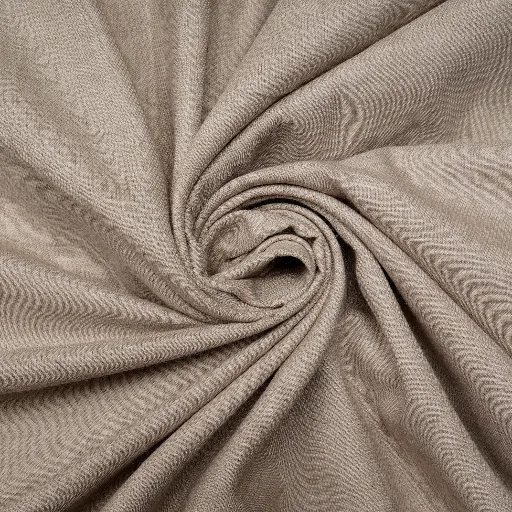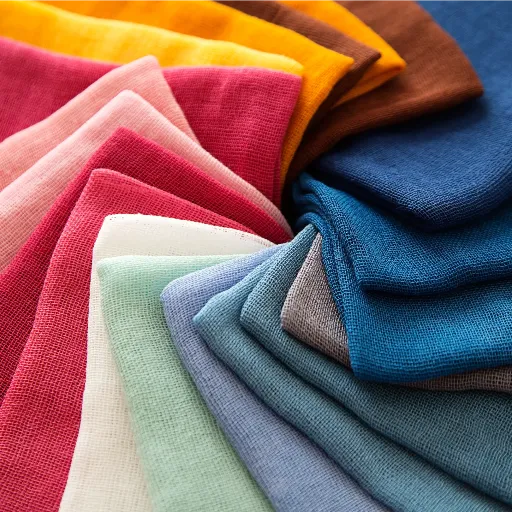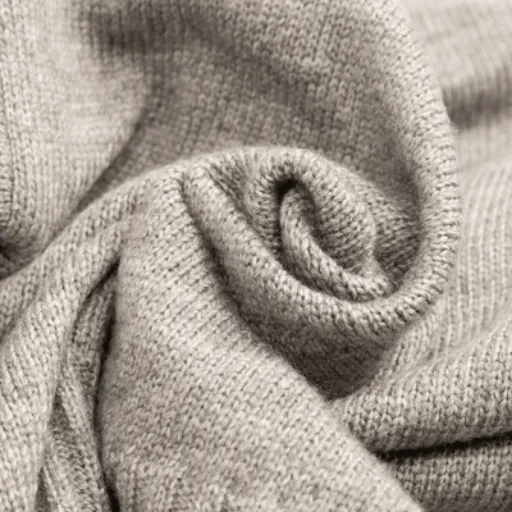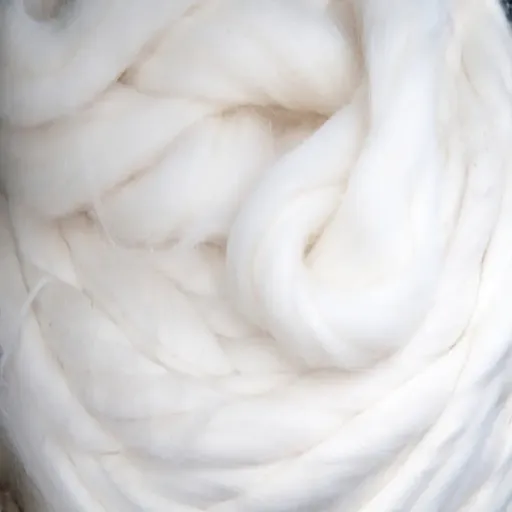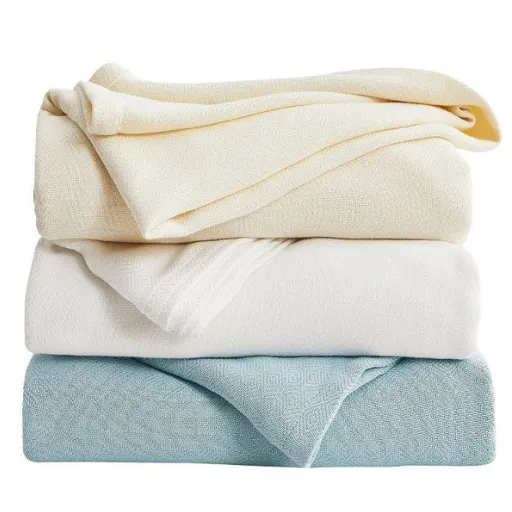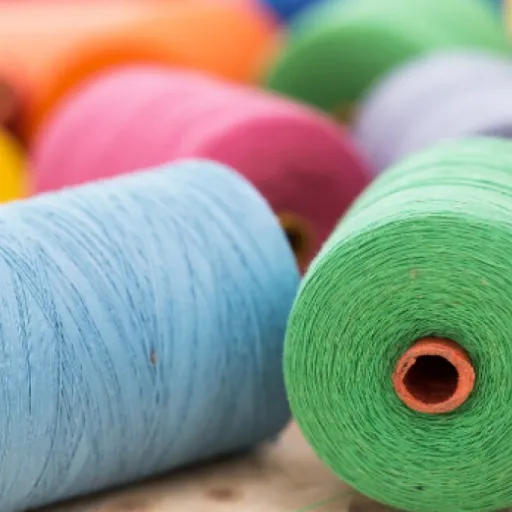Having knowledge of different materials is crucial when picking yarns for any crafting project. Two of the widely available synthetic options are polyester and acrylic yarns. Each has its own merits which fulfill different requirements. However, how do they measure up against each other with respect to durability, texture, cost and versatility? This article will elaborate on the critical differences between them, and will guarantee that as a shopper, you will have the right info when buying one. Whether it’s your first time dealing with yarn or you are a professional crafter, this guide has all the info you need to choose a material that best fits your intention.
What are the Main Characteristics of Acrylic Yarn?
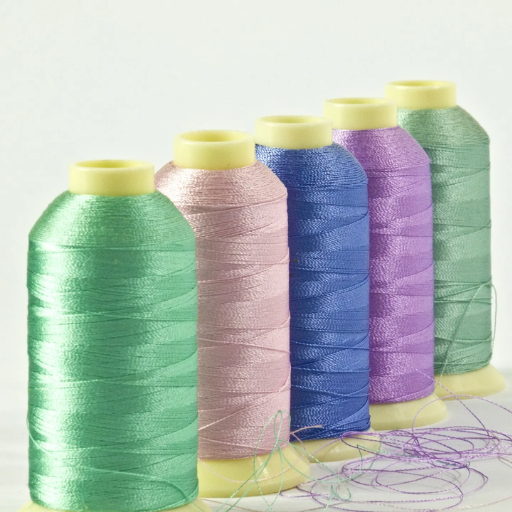
Acrylic yarns are synthetic fibers consisting of polymer compounds with stems from acrylonitrile. Its wide availability stems from its low cost, ease of use, and exceptional durability. Its features include:
- Durability: Highly resistant to damage, range of motion, as well as shrinking, making it ideal for long-lasting projects.
- Lightweight: Retains a high degree of comfort during all day wear, weather and control whilst remaining lightweight.
- Color Retention: Retains coloring exceptionally well ensuring vibrant colors that do not fade over time.
- Low Maintenance: Virtually effortless to wash, easy on the machine, and requires very little apply hands.
- Versatility: Different projects may require specific textures and weights of yarn. There are many options to choose from.
Acrylic yarn works best for novices and artisans looking for materials that are affordable yet of high quality.
What are the properties of acrylic fibers?
Acrylic fibers are synthetic fibers are made mostly from polyacrylonitrile and have several benefits for use in textiles and industry. Their key properties include:
- Lightweight and Warm: Acrylic fibers have a high weight to warmth ratio to insulation value, making them optimal for cold-weather apparel like thick sweaters and bat blankets.
- Moisture-Resistant: Absorbing moisture is rare with these precious fibers, thus ensuring a quick dry period and comfy wearing in different conditions.
- Durability: Acrylic does not sustain damage from frequent rubbing, chemicals, and exposures to the sun, which enable it to keep it’s apearance and structure over time.
- Softness and Flexibility: The use of contemporary methods of production increases the softness of acrylic fibers which have a wool-like touch, they are also very pliable and simple to manipulate with.
- Color Retention: That is why acrylic fibers can be dyed with bright bold colors and still retain their color even when exposed to light or washed several times.
- Economic and Customizable: The Flame Resistant Weatherproof Acrylic Fibers can be designed specifically on demand.
These characteristics are the reason why acrylic fibers outperform in a myriad of uses ranging from fashion, home furnishings, to outdoors and even industrial textiles.
What are the common uses for acrylic yarn?
The burly nature and interesting spirituality of yoga makes it forlorn in these financially shifting times we aim for knitting and crocheting as hobbies, becuase of the massive motivation it brings forth. Garments like sweaters, scarves, hats, and blankets, as well as items of home textiles along with other personalized works, are made easy through the soft texture and affordability it possesses. Not only these, but for commercial purposes too, it can be used to craft things like upholstery made for the outside and also rugs. The acrylic yarn proves its value through boosting innovation skies high, due to the fact that it is moisture uplifter, makes usage rugs out of feel good material, is UV resistant, wearable, and keeps the inexpensive turbo working, makes it go to option if one plans to suplly things, bake ordersec or uofu their socks. It can be manufactured in enormous quantities and different types of colors and textures needless to say makes it preferred for decorative or functional use. Furthermore, new developments in fiber technology allows for the incorporation of features such as flame retardancy or stain resistance which broadens the use further.
How Does Acrylic Yarn Compare to Polyester Yarn?
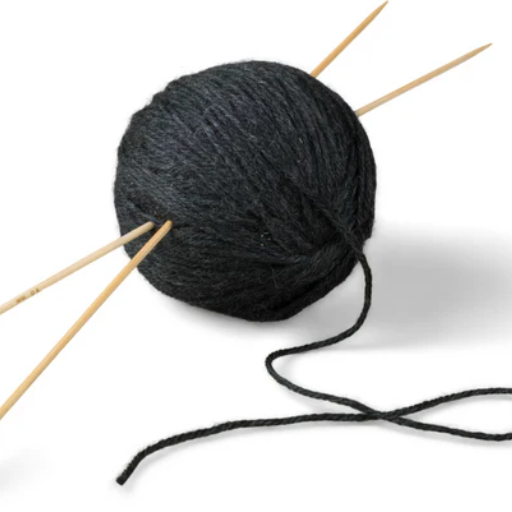
Like polyester yarn, acrylic yarn have in common that they are synthetic and durable. However, they do differ in some cases. Polyester yarn is known to possess exceptional strength and also has high resistance towards stretching while still being able to maintain shape, which makes it ideal for industrial and outdoor works. Polyester is also performing very well in moisture wicking applications because it is water resistant. On the other hand, acrylic yarn is more comfortable and lighter, softer to touch and provides a wool-like feel making it better for clothes and soft furnishings. Acrylic, on the average, has better insulation; but one would argue that polyester has a higher durability when it comes to UV radiation and abrasion. The decision relies on singular attributes for both, such as texture and environmental exposure for the durability aspect.
What are the differences between polyester yarn and acrylic yarn?
|
Key Point |
Polyester Yarn |
Acrylic Yarn |
|---|---|---|
|
Material Origin |
Synthetic polymer (PET) |
Synthetic polymer (acrylonitrile) |
|
Texture |
Smooth, coarse |
Soft, wool-like |
|
Durability |
High abrasion resistance |
Good durability |
|
Water Absorption |
Minimal, quick-drying |
Low, quick-drying |
|
Weight |
Heavier |
Lighter |
|
UV Resistance |
Excellent |
Moderate |
|
Thermal Insulation |
Moderate |
Superior |
|
Stretch and Recovery |
Moderate elasticity |
High flexibility |
|
Resistance to Pilling |
Moderate |
Susceptible |
|
Best Uses |
Outdoor gear, upholstery |
Apparel, blankets |
|
Maintenance |
Requires minimal care |
May require gentler handling |
|
Environmental Impact |
Higher (microfiber pollution) |
Concern for plastic pollution |
|
Cost |
Generally more affordable |
Usually slightly more expensive |
What are the advantages of polyester yarn over acrylic?
Yarns that work off acrylic threads especially work with polyesters, because of the lack of expensive resources needed to craft it, using advanced chemical methods, however, is worth it when word gets out how it proves itself to sell. Their profit rate due to working with polyester proves itself in the pros list mentioned below.
- Durability
Thermoplastic material, also called polyester like yarn has no forgiveness when being weaker than acrylic as it stronger and resists more wear when put to work. For example when dealing with outdoor gear and oppressive anymore residue lording heavy duty fabrics, this would come handy. Quite flexible if left unbothered, Polyester fibers often show a tensile strength of 70-100 cN/tex, whereas acrylic typically ranges around 40-50 cN/tex.
- Better Resistance to Moisture
Due to its superb moisture-wicking capabilities, polyester is able to repel water and dry quickly. Because of this, polyester yarn is ideal for sportswear and outdoor products, Dermatologists recommend hikery products made from acrylic fibers because of their lower water resistance and higher water retention.
- Thermal Stability
Unlike acrylic, polyester possesses higher heat resitance. Performance factors can directly impact environments where heat is a concern, as it retains structural integrity at higher temperatures. Heat still affects these materials, however, polyester melts at a whopping 250°C while acrylic start to soften at a mere 150°C.
- Fade Resistance
Due to its stronger UV resistance, polyester yarn retains its color longer than acrylic does, even when in the sun for long periods. This characteristic makes polyester more desirable for outdoor fabrics and items which receive direct sunlight.
- Ease of Maintenance
In terms of maintenance, thicker and heavier polyester flow fabric is better because it requires less care. With no garments needing dry cleaning and minimal upkeep after long uses, its maintenance fees are offset by wide versatility. While layering acrylic does have some low maintenance advantages, it is often more prone to damage and pilling while being washed.
By utilizing these benefits, the yarn outperforms in many aspects and is only bested by acrylic when prolonged durability, strong materials, and low maintenance are not a priority.
What are the Environmental Impacts of Polyester and Acrylic?
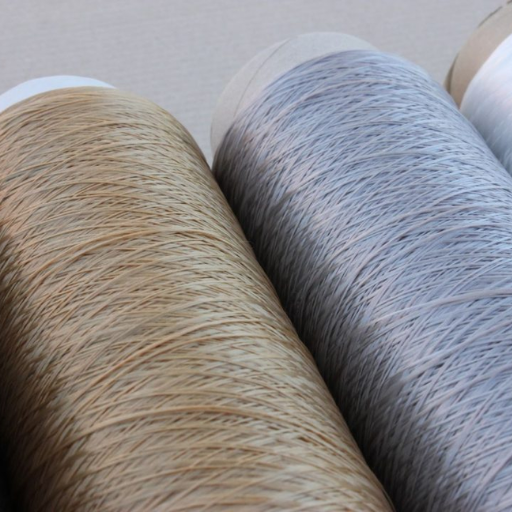
The majority of the negative impacts sparking from the acrylic and polyester industry stems from both them being synthetic materials and carbon fuel dependent. The low carbon and energy economy is boosted even further with its petroleum fabrication which causes significant emissions for plastic derived products. Equally harmful, acrylic is constructed from the petrochemical acrylonitrile, known for releasing willingly harmful disposables during its manufacturingh that it releases into the world.
Additionally, microplastic pollution is contributed to by both polyester and acrylic. When washed, these textiles release their fibers, which flow into wastewater systems and later, ecosystems that support life underwater, which is dangerous for sea creatures. Even though these textiles are durable, they cannot be broken down by natural processes, which creates waste management challenges and persists environmentally forever. Developing substitutes for recycled polyester and finding solutions to create biodegradable synthetic fibers are examples of efforts directed to diminish these impacts.
How does the production of polyester affect the environment?
Polyester is primarily produced from petrol chemicals industry, because it comes from polyethylene terephthalate (PET) which is a polymer formed by linking together ethylene glycol and terephthalic acid. These two components are derived from crude oil making the process of manufacturing polyester fossil fuel intensive. Research indicates that producing one ton of PET polyester will emit an estimated 6 tons of crude oil, greatly enhancing greenhouse gases. Furthermore, the emissions associated with the production process also include volatile organic compounds (VOCs) and mercury gases which harm air quality, further impacting human health with the deposited air. In addition, polyester factories are known for their enormous energy and water demand, depleting a resource on which these factories depend. Apart from this, the finishing and dyeing steps release a lethal set of chemicals which poisons water bodies, disrupting and endangering aquatic life. Coupled together causes, this proves that the production of polyester leads to environmental degradation.
What are the sustainability concerns with acrylic fibers?
Acrylic fibers raise substantial sustainability issues because of their acrylic fiber production methods, constituent materials, and ecological consequences. Acrylic forms from the polymerization of acrylonitrile, a compound obtained from fossil fuel sources like petroleum and natural gas. Gaining access to these resources will further drill a hole in the environment as the extraction and processing of these non-renewable materials will incur massive greenhouse emissions and energy drain. In addition to this, the production of acrylonitrile also utilizes highly toxic substances like ammonia and hydrogen cyanide which not only endangers workers but also the environment in regards to pollution mitigation due to needing strict controls.
A greater concern is the incorporation of microplastics into plastics’ products acrylonitrile textiles during its lifecycle. Washing acrylic knitted products, aerosolized fibers will peel off and be combined with water effluent; as a direct result of washing, small plastic particles, aka microplastics, will be released from the fiber. Lacking the capacity to be filtered means that microplastics can escape filtration systems and eventually make their way to uses oceans and rivers where they pose a significant threat, resulting in serving global environmental pollution. The existence of acrylic fibers in non-biodegradable form means that landfills will become even richer amassing this waste which can last several decades. There unique features glaringly demonstrate the shortfalls of using and manufacturing acrylic fibers along with developing strategies and sustainable options of innovation for the textile industry.
When Should You Choose Polyester Over Acrylic?
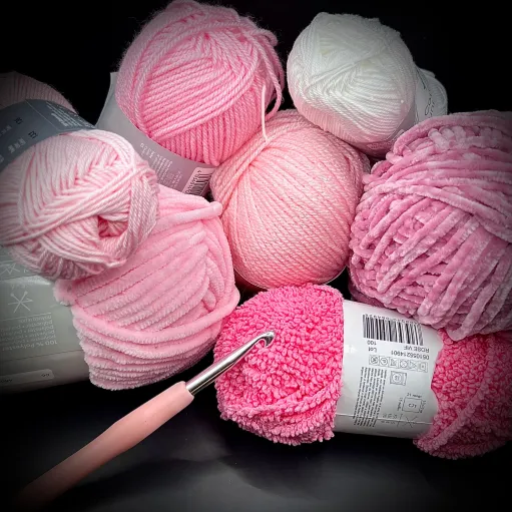
A material like acrylic or polyester holds the trump card when it comes to moisture, versatility, and overall durability. Polyester fibers are moisture-wicking, surpassing those of its acrylic competitor, and these reasons make it ideal for outdoor gear, activewear, and furniture upholstery. If you’re looking for a fabric that can withstand hot and humid weather, then acrylic will fall out and not be the ideal option as it’s not as effective as polyester in humid weather. Acrylic loses a lot of the warming and humid conditions which are ideal when it comes to weaving.
What factors should influence your choice between polyester and acrylic?
- Durability Requirements
For applications that require sustained functionality, polyester endures the longest due to its high tensile strength and resistance to wearing down easily, as well as its ability not to stretch easily. Although durable, acrylic may not withstand prolonged physical stress as well as polyester does.
- Moisture Resistance and Wicking Abilities
Polyester is preferable for places with high humidity stricken environments water because moisture is managed best which also makes sweat absorbing activewear. Because it gets rid of moisture off the skin, it is comfortable in outdoor activities. Unlike acrylic, which is not as good as getting rid of moisture and can hold more water, which is bad in moist settings.
- Thermal Properties
Acrylic retains heat much better than other fibers, meaning it is best for cold weather apparel and products. While polyester isn’t the best insulator, it’s thermal efficiency is moderate. It is mostly chosen for its breathability and lighter weight.
- UV Resistance
Acrylic can be more appropriate for some outdoor products such as furniture covers because it has a greater resistance to UV deterioration than polyester. Presuming they will spend a long time in the sun. Although some polyester is upgraded specifically to increase UV resistance, this will shift the balance in its favor.
- Cost Efficiency
Depending on the application, cost can be a deciding factor. While performance may not be critical in some projects, budget certainly is. So in this case, lower-cost acrylic becomes a more appealing option.
Assessing these factors in-depth alongside the use case enables the user to strike an optimal balance among value, effectiveness, environmental impact, and performance.
Are there specific projects better suited for polyester yarn?
Polyester yarn works well in Polyester takes the lead in applications requiring durability, moisture resistance, and tensile strength. Its synthetic nature, like stretching, shrinking, and creasing, makes it a prime candidate for outdoor fabrics like awning and tarp textiles. Moreover, low moisture absorption worsens humidity and direct water contact effects, like those for marine fabrics or activewear, but improves performance polyester used in those fabrics. Its wide use in conveying and in making safety harnesses in the industrial sector is due to the polyester yarn’s strength-to-weight ratio. Another advantage of polyester is the ease of dyeing it. Vivid colors can be added easily and last for a long time, which makes them preferred for decorations and commercial purposes. All these factors, combined with a multitude of versatile and comprehensive projects undertaken across the globe, highlight its superiority.
How Do Polyester and Acrylic Stack Up in Terms of Breathability?
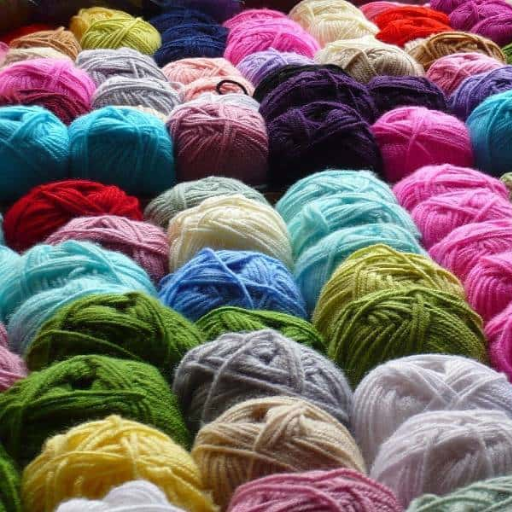
Due to their nature, polyester and acrylic differ greatly in their breathability. The synthetic fibers of polyester make it less breathable and trap heat and moisture which is uncomfortable during warmer period. Despite this, some newer developments have added moisture-wicking technologies into polyester fabric design, increasing its sweat managing capabilities as well as promoting airflow. Acrylic is less breathable overall because it is made to replace wool and its insulating properties. This makes acrylic more useful in cold environments where retaining heat is beneficial, though less breathable in hot weather.
Which is more breathable: polyester or acrylic yarn?
Regardless of wicking capabilities and advanced fiber technologies, moisture moves less actively through polyesters’ tightly woven fabrics. These innovations, however, support airflow in the vents. There indeed are situations when moisture can’t remove, but happens to be in athletics or other physically strenuous activities, high-performance environments, like in military, construction or sporting activities, dispersing and evaporating moisture will now always be back.
Acrylic is synthetically designed to capture the properties of wool, hence it is primarily focused on insulation rather than ventilation. The absence of airflow is compensated as the synthetic fibers in acrylic trap air, providing warmth which makes it more difficult for moisture to escape. Because of this, acrylic yarn is less breathable than polyester, especially under conditions where heat and moisture need to be effectively managed.
Acrylics do not have the breathability that polyester has because the latter employs technologies that improve ventilation and moisture control.
What makes polyester yarn suitable for different climates?
Reference Sources
-
Development of Surface Coating based Hybrid Acrylic Copolymers for Coating Application:
- Focus: Examines the development and characterization of hybrid acrylic copolymers for surface coatings.
- Key Findings: Highlights the use of acrylic acid and methylacrylic acid in creating water-dispersed acrylic resins for hydrophilic applications.
-
- Focus: Discusses the use of acrylic resins in prosthetics, emphasizing polymerization types and their impact on functionality.
- Key Findings: Explores the role of acrylic components in ensuring prosthetic stability.
-
Phase Behavior and Coacervation of Aqueous Poly (Acrylic Acid)− Poly (Allylamine) Solutions:
- Focus: Investigates the phase separation and coacervation of poly(acrylic acid) with poly(allylamine hydrochloride).
- Key Findings: Provides insights into the behavior of oppositely charged polymers, which could be relevant for material comparisons.
Frequently Asked Questions (FAQs)
Q: What are the key differences between acrylic and polyester yarn?
A: The key differences between acrylic and polyester yarn lie in their composition and properties. Acrylic yarn is made from acrylic polymer, while polyester yarn is made from polyester. Polyester typically has better moisture-wicking properties, making it suitable for activewear and outdoor clothing, whereas acrylic is often used for its softness and vibrant colors.
Q: Is acrylic yarn better than polyester for certain projects?
A: Yes, acrylic yarn has advantages such as being softer and more lightweight, which makes it suitable for projects like blankets and scarves. However, for items that require durability and moisture-wicking properties, polyester yarn may be preferable.
Q: Can polyester yarn vs acrylic yarn be used interchangeably in projects?
A: While polyester yarn vs acrylic yarn can sometimes be used interchangeably, it is important to consider the specific properties of each type of yarn. Acrylic may offer more softness, while polyester provides durability and strength, which can affect the final outcome of your project.
Q: What are the advantages of acrylic yarn over polyester?
A: The advantages of acrylic yarn include its affordability, softness, and a wide range of colors. It is also lightweight and easy to care for, making it a popular choice for beginners and for projects like toys and garments.
Q: How does the durability of polyester and acrylic yarn compare?
A: When comparing durability, polyester is generally more durable than acrylic. Polyester yarn is resistant to stretching and fading, making it suitable for long-lasting projects, whereas acrylic may wear out faster over time, especially in high-use items.
Q: What types of clothing are best made from polyester and acrylic yarn?
A: Polyester and acrylic yarn are both suitable for different types of clothing. Polyester is often used in activewear and outdoor clothing due to its moisture-wicking properties, while acrylic is commonly used for sweaters, hats, and blankets because of its softness and warmth.
Q: Are there any natural fibers like cotton or wool that can compete with acrylic and polyester?
A: Yes, natural fibers like cotton or wool have their own unique properties that can compete with acrylic and polyester. Cotton is breathable and soft, making it great for summer garments, while wool provides warmth and insulation for winter wear. However, synthetic yarns like acrylic and polyester have advantages such as being more affordable and easier to care for.
Q: What should I consider when choosing between acrylic vs polyester for my project?
A: When choosing between acrylic vs polyester, consider the type of yarn you need for your project. Think about the softness, durability, and maintenance of the yarn. If your project requires flexibility and warmth, acrylic may be best; for outdoor or activewear, polyester would be more suitable.








